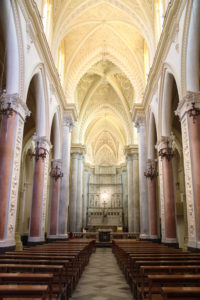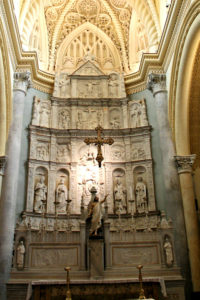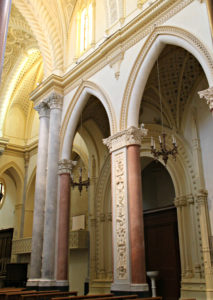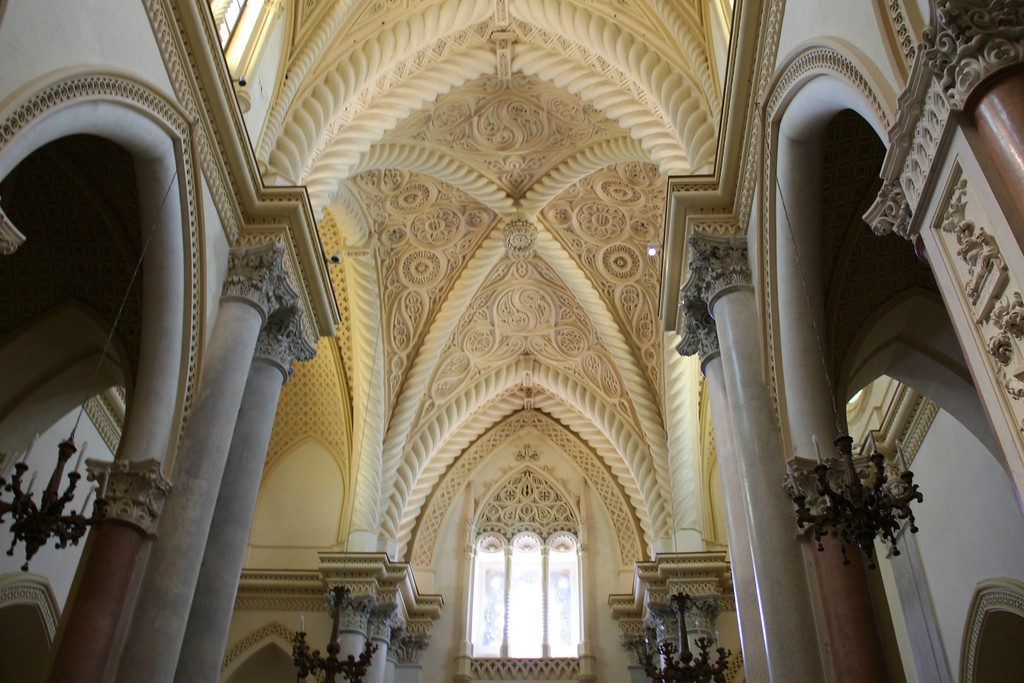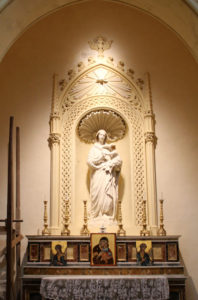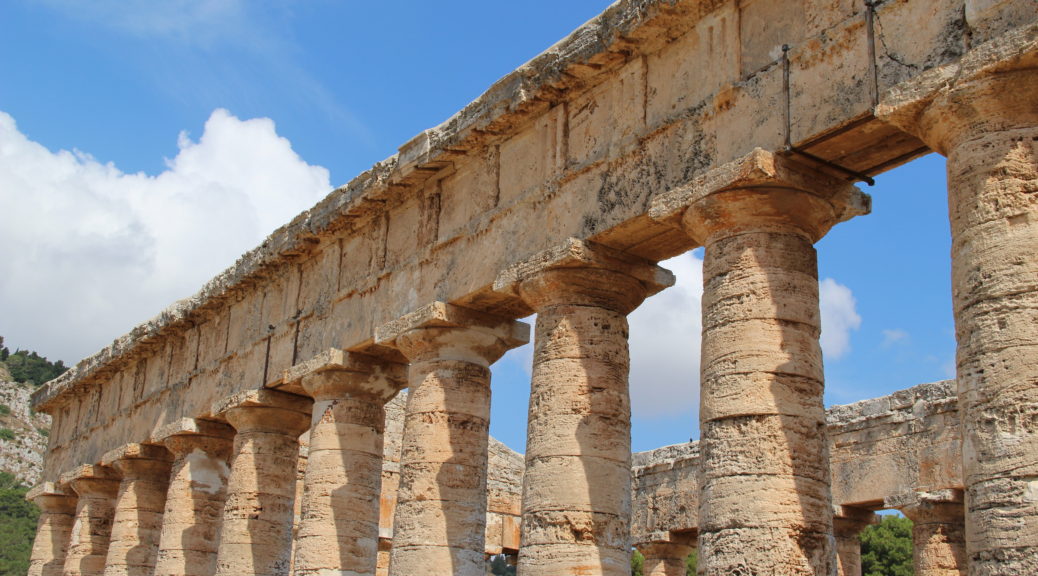
Segesta and Erice
After leaving Stromboni, we made our way to Sicily where our first port of call was Trapani. From there we drove to Segesta where we saw the remains of a Greek Temple. Segesta was located on Mt. Barbaro which provided it with a defensible position and was also near the coast which was ideal for trading. Segesta was founded by the Elymain people who inhabited western Sicily. They were influenced by the Greeks, probably because Segesta was an important trading port. It is likely the Elymain people built the temple, possibly in an effort to secure military and financial support from Athens as they faced attacks from others. Carthaginians, Romans and Arabs also controlled Segesta but it was ultimately abandoned. The fact that Segesta was abandoned may have contributed to the temple being so well-preserved.
The temple was built around 417BC in the Greek, Doric style (smooth columns). The exterior of the temple was completed with the exception of the roof. The interior was not completed – and perhaps never started. The temple is approximately 85 feet wide and 200 feet long. The temple has six columns in the front, six in the back and 14 along each side. The columns are just over thirty feet tall. The temple is made of travertine, a kind of limestone. There is still debate as to why construction may have stopped – one theory is that it stopped in 409BC when the Carthaginians occupied Segesta. We will probably never know for sure.
As you can see in the pictures, steel rods have been added to the temple for support. A water resistant solution has also been applied to help protect it from inclement weather. We were able to walk completely around the temple. It is a very impressive structure, especially when you consider it is over 2,400 years old.


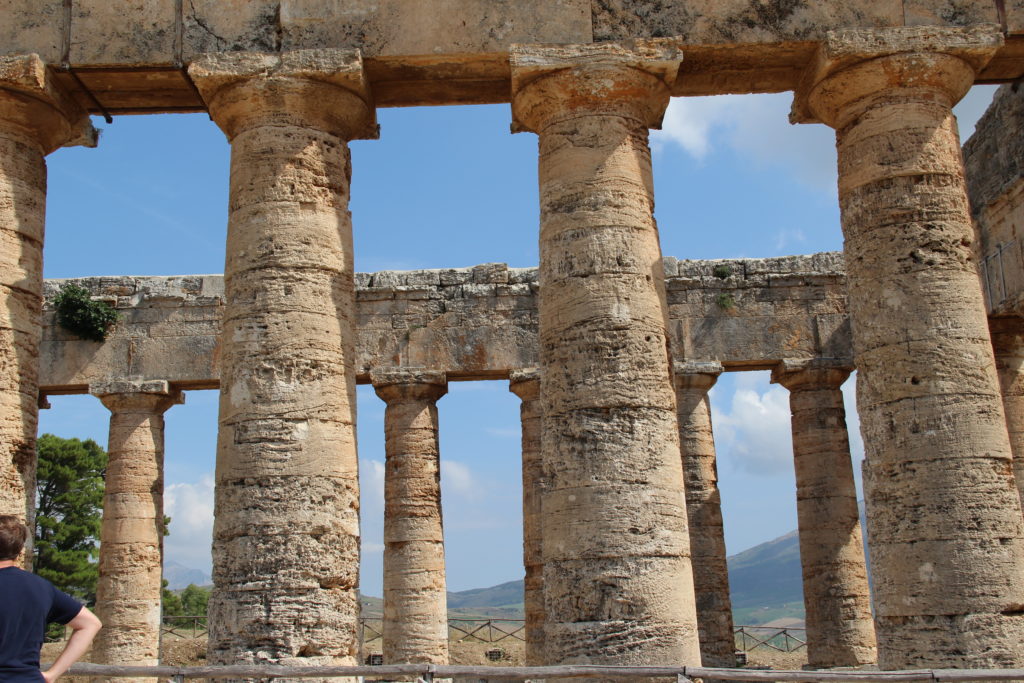
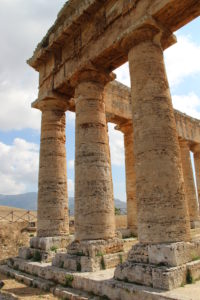
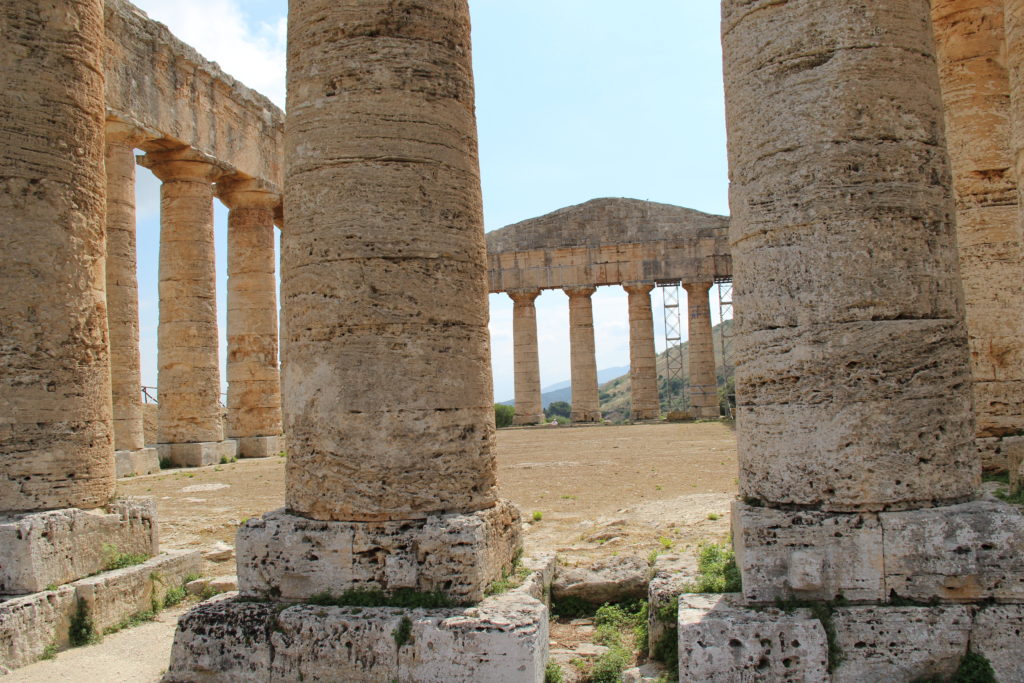
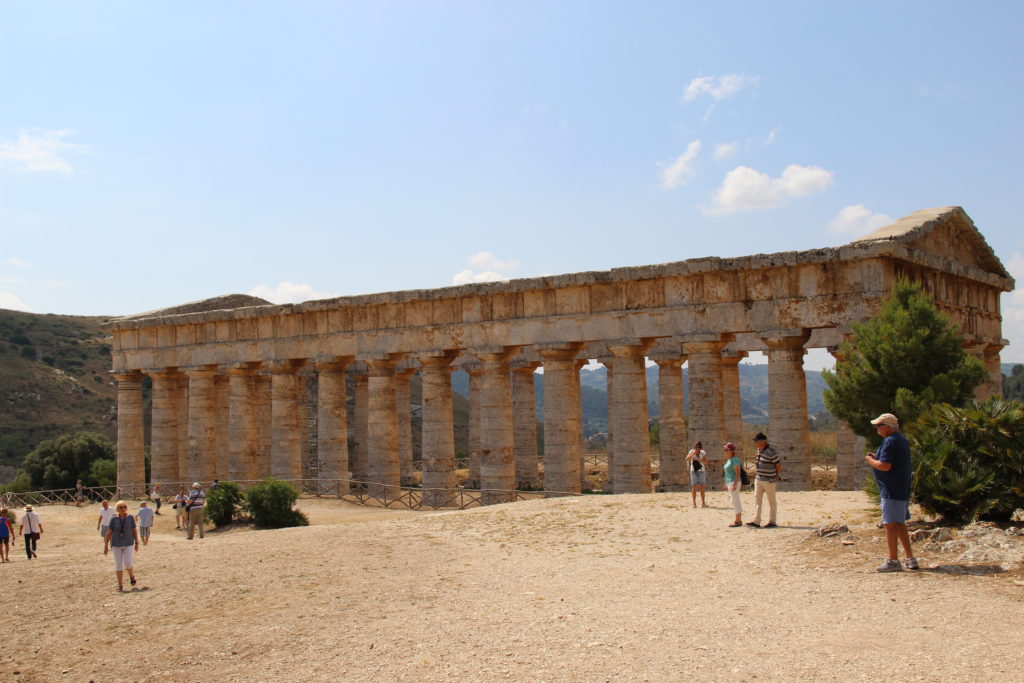
We left Segesta and made our way to Erice, a beautiful medieval town over 3,000 years old and set 2,500 feet above sea level. We went up winding roads with hairpin turns and were rewarded with beautiful views of the valley below. After a picture of the road, you will see the area where we stood to take pictures of this area. Rob, our tour director, took pictures as we posed in front of this incredible landscape. The views are of Cornino Bay and Confano Mountain. These pictures are followed by one with a man taking pictures. In the background you can see Trapani, salt flats and the Egadi Islands. We were lucky that the clouds – sometimes referred to as the kisses of Venus – still allowed us beautiful views of the bay.

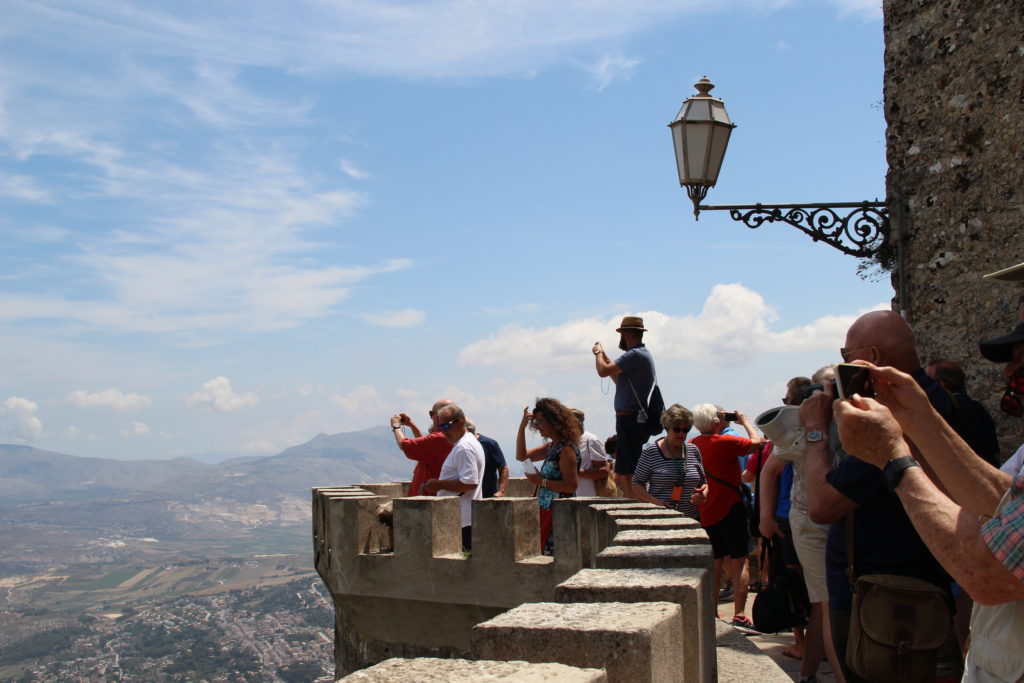

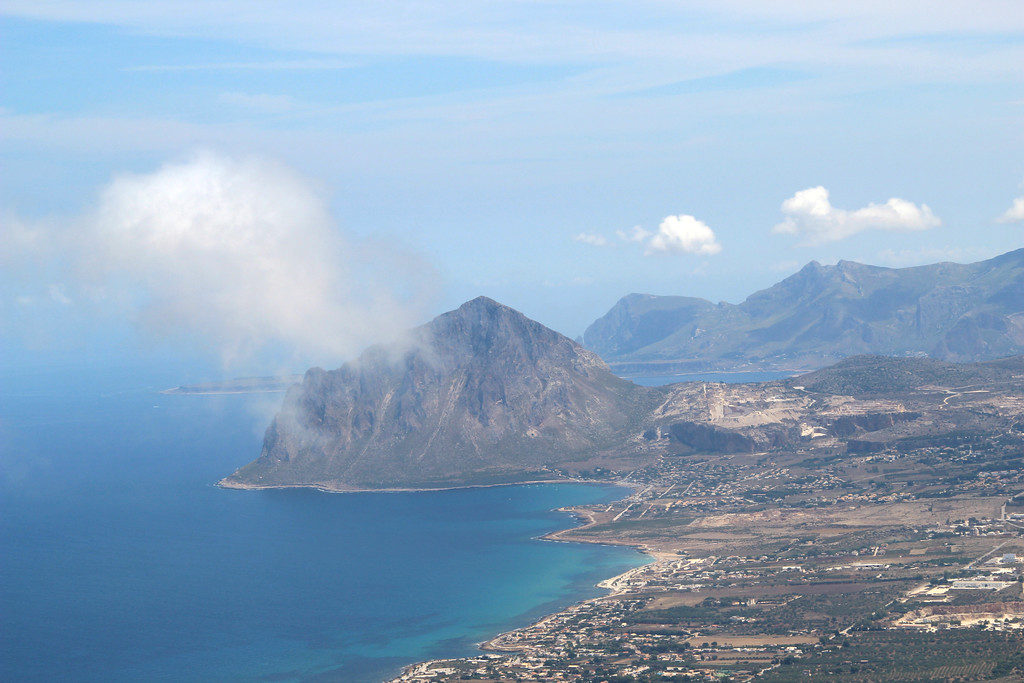

Like Segesta, Erice was probably founded by Elymians but controlled by many powers including the Greeks, Carthaginians, Romans, Arabs and Normans. One of the ruins in Erice is the Norman Castle, also called the Venus Castle (first picture below). It is on Mt. Erice. There had originally been a temple to Venus on the site. The Normans built the castle, reportedly using some of the stones from the original temple. The castle was built in the 12th Century, went into disrepair, and was then renovated in the 19th Century.
The second picture is of the Porta Trapani Gateway which leads to a pedestrian area. Dating back to medieval times, it is an old city gate and part of the city wall. Erice was spared damage during World War II resulting in much of the wall and many of the archways and gates to remain.
You can have a wonderful time in Erice just wandering the streets. Jane Brox, a reporter for the Boston Globe, wrote an article about Erice after visiting in 2013. She shared that a local told her, “You don’t come here to see the sites, you come here to be here.” I think there is a lot of truth in that statement. Cobblestone streets led to views of the bay, beautiful balconies and interesting shops, some selling ceramics and rugs. One of the crafts for which Erice is known is their woven rugs, created on looms. We purchased one that is several feet long but only about a foot wide. As is typical, it has bright colors and geometric shapes – we are using it as a table runner. Our group also enjoyed a traditional Sicilian lunch at the Gli Archi di San Carlo (The Arches of San Carlo). In past times, the building was the laundry for a convent. Today it offers patrons great food and wine which can be enjoyed in a charming setting.
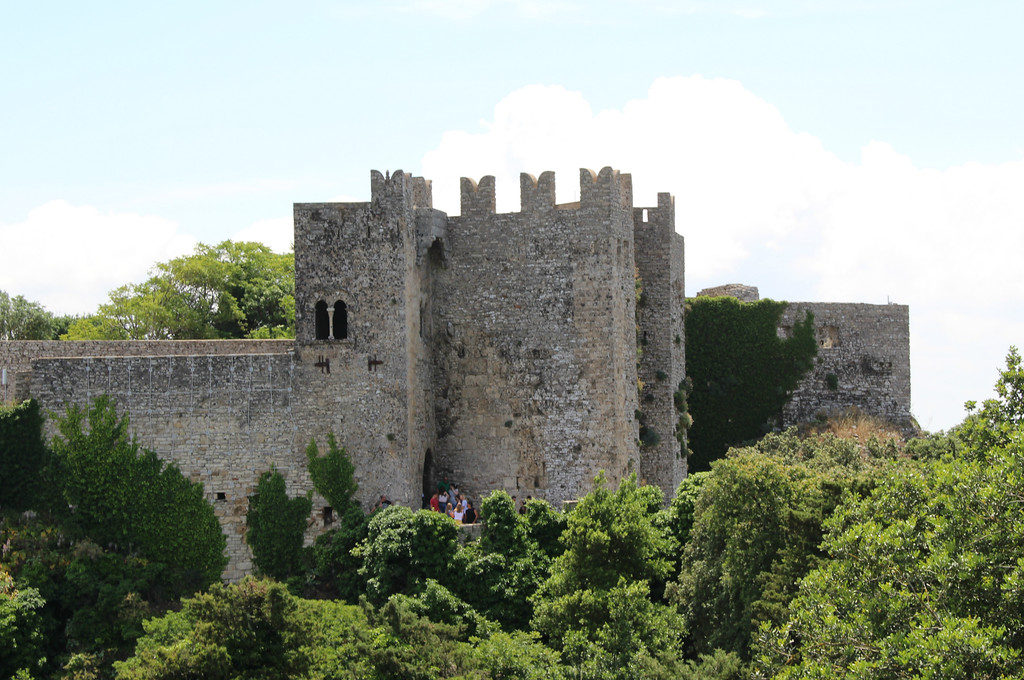



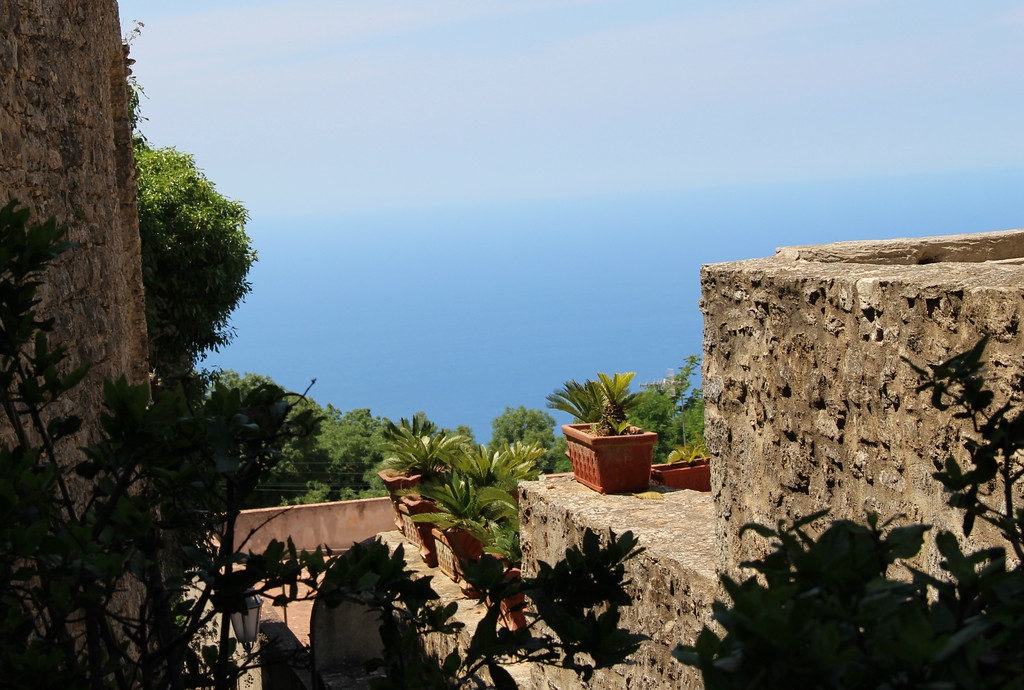

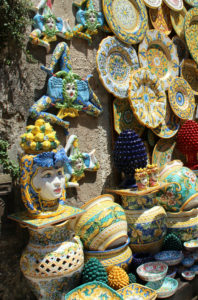
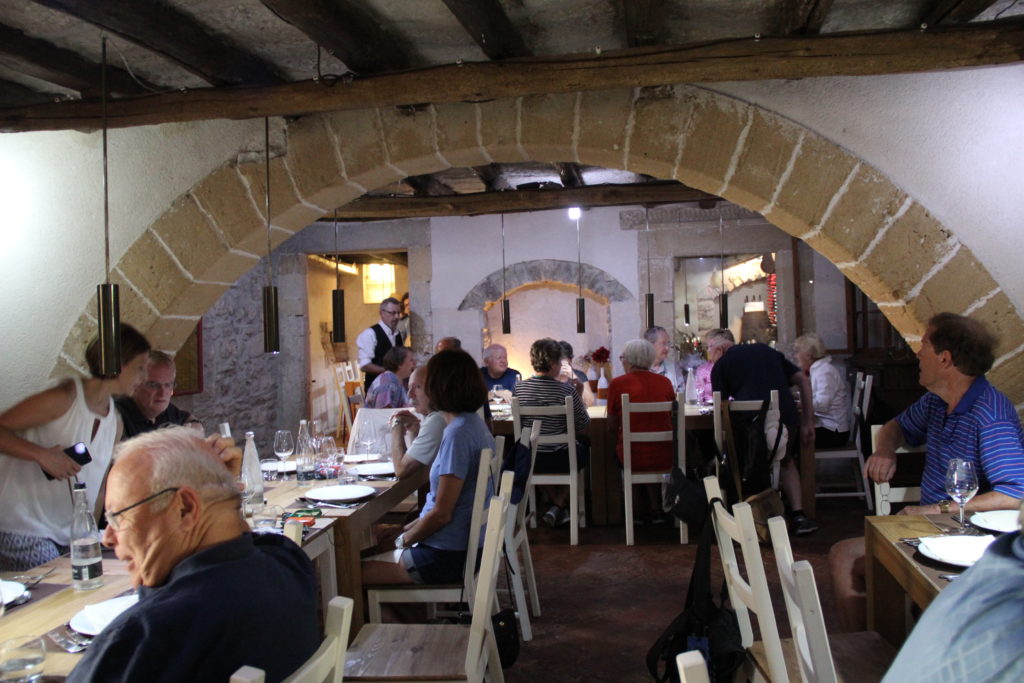
Erice is well known for its many churches. The pictures below are of the Royal Cathedral, also known as the Real Duomo and the Mother Church. The church dates back to the 4th Century AD, but the current church building was built in 1314 under the direction of King Frederick III. Some of the building materials are from the temple of Venus. You can see its beautiful rose window in the second picture – it is relatively new (1954). Somewhat unusual is the porta or porch just outside the main building. A bell tower stands next to the church. It was built in the 13th Century to function as a watchtower at the time of the Vespers War but then transformed into the church’s bell tower. It is known as the Tower of King Frederick.
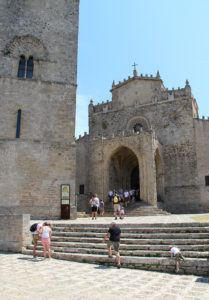
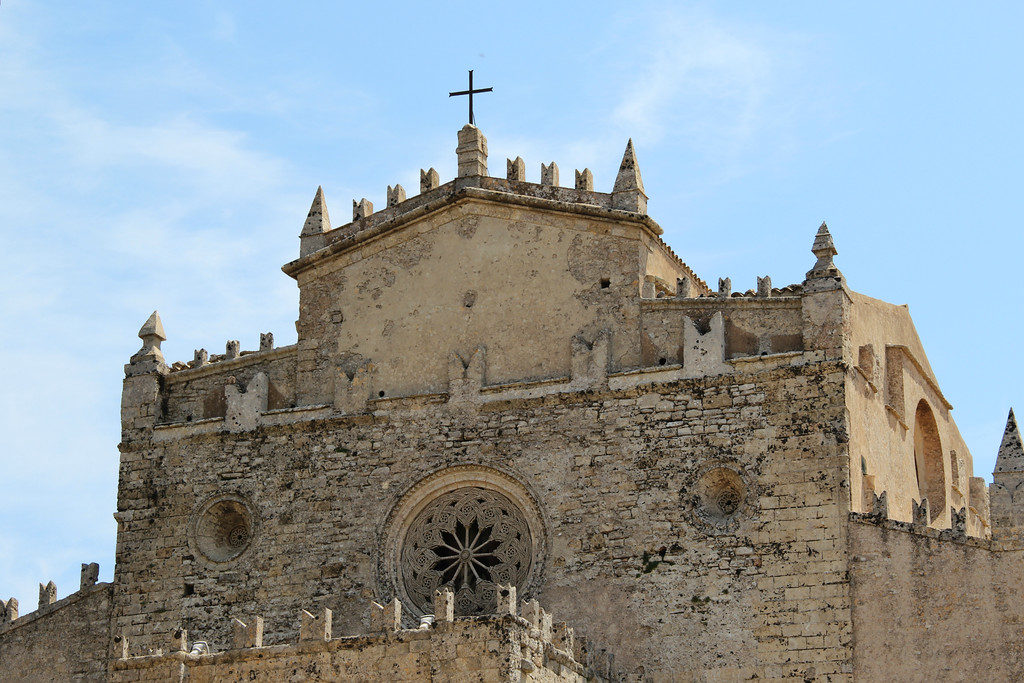

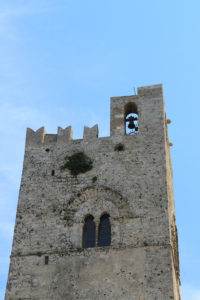
During some of our free time, we went back the Duomo to see the interior. While the exterior of the church is original, part of the interior collapsed in 1853 and was rebuilt in 1865. My first picture was taken from the back of the church. In addition to what you can see in the picture, there was also a museum area and several chapels.
The second and third pictures shows a closer view of the alterpiece. It was completed in 1513. The altarpiece consists of marble bas reliefs showing Jesus and the twelve disciples. Above those are scenes from Jesus’ life including His crucifixion and the pieta. In the central area you can see Mary holding her child (though the light makes it hard to distinguish details). The church is dedicated to Mary. The large, silver cross in front of the altarpiece was made by a Sicilian silversmith. The is also a picture of the railing separating the sanctuary from the altar area.
After these pictures are two pictures giving you a closer glimpse of the pillars and ceiling. The ceiling is truly unique. It is made of stucco and resembles lace. Finally there is a picture of a statue of Mary in one of the chapels. The statue dates back to the 15th Century. In spite of the damage suffered in the partial collapse of the church in 1853, much was fortunately saved.
